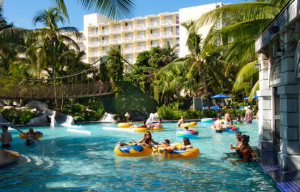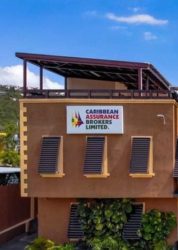The Jamaican economy grew 8.3 percent in the September quarter over the June quarter, with construction rising 7 percent over 2019 as signs of recovery from the highly depressed June quarter takes hold. This trend should continue as the tourism sector picks up the pace of recovery from a virtual lockdown between March and June.
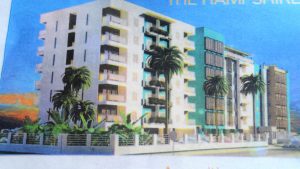
The Hampshire Apartments complex built by Guardian Life.
With construction being the star performing sector for the September quarter, continued growth in this area is expected to continue into 2021 as new road construction, the building of houses and hotels continue. The country is short of factory and warehouse space; these areas could add to growth in 2021 and beyond.
As the hotel sector gradually picks up pace, the drag that the sector has on the rest of the economy should decline, as such other sectors serving the industry should also see improvements. Some of the sectors are transportation, manufacturing, agriculture, water, electricity and banking.
In all probability, the first quarter of this year is set to show a sharp fall in visitor arrivals compared to last that saw just over 574,000 stopover arrivals, with January and February at full capacity with 463,000 visitors but there were no visitors on April or May and just over 7,000 in June. The recent trend suggests that barring unforeseen developments, the 2021 June quarter numbers should show an encouraging out turn, indicating that the recovery continues apace. Visitor arrival numbers were the highest in November since the reopening, with just under 50,000 stopover visitors, down 76 percent from the 203,000 arrivals in 2019. That beats October with 45,000, which is ahead of July and August with over 41,000 stopovers. December final numbers are not yet in, but preliminary numbers put arrivals to December 28 at an encouraging 98,000 arrivals. The numbers should reach 110,000 by the end of the month or 39 percent of the 281,000 arrivals in December 2019. The trend since reopening in June is for a near gradual monthly percentage-wise improvement.
 Rebound in tourism will increase the supply of foreign exchange to the market and hopefully, lend to greater stability of the rate even as the central bank rebuilds the Net International reserves.
Rebound in tourism will increase the supply of foreign exchange to the market and hopefully, lend to greater stability of the rate even as the central bank rebuilds the Net International reserves.
The BPO sector seems set to grow, with employment stated to be moving from 40,000 to 50,000 during the year. Late last year, the president of the Global Services Association of Jamaica, Gloria Henry, told the Observer that the sector had rebounded to the point where it now employs some 39,000 people.
In reciting developments in the BPO industry, the Jamaica Observer newspaper reported recently the following: “According to Henry, in the Montego Bay Free Zone, where she operates, the information technology outsourcing portfolio has grown by 12.77 percent and the aim is to grow by 66 percent this year. Henry pointed out that the BPO industry leaders had started 2020 with a great deal of enthusiasm and were ready to implement projects in a number of areas to boost employment to 50,000.”
“We have navigated uncertainty very well and now with resilience, we are advancing towards the future,” said Henry as she indicated that five new BPO sites are scheduled to be launch in the first quarter of this year.”
 Areas of the local economy that have social distancing restrictions will continue to be under pressure with reduced business activity. Areas such as live entertainment and, by extension, transportation will find it hard to recover fully in 2021.
Areas of the local economy that have social distancing restrictions will continue to be under pressure with reduced business activity. Areas such as live entertainment and, by extension, transportation will find it hard to recover fully in 2021.
Balance of trade data up to September, reported by the Statin, shows a sharp fall in the country’s import bill resulted in a billion-dollar reduction while exports declined by a much smaller amount, leading to a sharp improvement in the trade balance.
The government will be collecting more revenues as the economy gradually opens up and some areas of expenditure, such as support for the fall out of the Coronavirus, will be reduced.
Al in all, things are looking much better for a strong recovery in the overall economy for 2021, but it is unlikely to fully recover until 2022.
Under such subdued economic activity, interest rates should continue to remain low, but the unemployment rate that rose sharply in 2020 will gradually fall during the year.
Against the above development, the local stock market should deliver positive results in 2021 and real estate values should continue to increase.
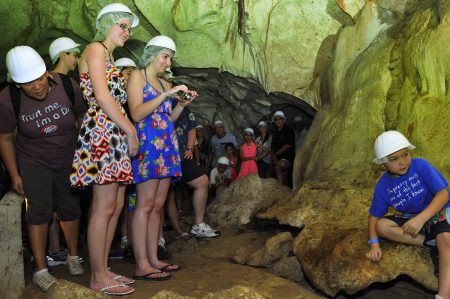 Stopover visitor arrivals rose strongly by 6 percent first two months of the year ahead of the similar period last year. January enjoyed a 4.9 percent bounce according to data put out by the JTB with February rising by 7.1 percent.
Stopover visitor arrivals rose strongly by 6 percent first two months of the year ahead of the similar period last year. January enjoyed a 4.9 percent bounce according to data put out by the JTB with February rising by 7.1 percent.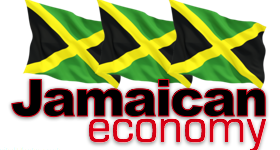 Jamaica will see steady growth with improvements in several areas during the year, with increased output for manufacturing, tourism, finances and other service sectors such as BPO and entertainment. The continuation of major road construction projects and many new buildings going up in the country will also aid the continuation of economic growth during the year.
Jamaica will see steady growth with improvements in several areas during the year, with increased output for manufacturing, tourism, finances and other service sectors such as BPO and entertainment. The continuation of major road construction projects and many new buildings going up in the country will also aid the continuation of economic growth during the year. Data out of Statin indicates a 4.9 percent increased output in the manufacturing sector for the September quarter, helped by gains in PetroJam production. That is faster than the July quarter, with growth of 3.2 percent and the first quarter growth with negative 1.3 percent following a 2.4 percent increase in the December 2018 quarter. The trend is positive for the manufacturing sector and augurs well for a good increase in 2020. Continued growth in loan financing and increasing interest of companies seeking fresh long-term capital through the capital market are big positives for the business sector in 2020 and beyond. The Manufacturing sector’s use of borrowed funds, excluding cement, was consistent with 20 percent increased borrowing in 2019 and 2018.
Data out of Statin indicates a 4.9 percent increased output in the manufacturing sector for the September quarter, helped by gains in PetroJam production. That is faster than the July quarter, with growth of 3.2 percent and the first quarter growth with negative 1.3 percent following a 2.4 percent increase in the December 2018 quarter. The trend is positive for the manufacturing sector and augurs well for a good increase in 2020. Continued growth in loan financing and increasing interest of companies seeking fresh long-term capital through the capital market are big positives for the business sector in 2020 and beyond. The Manufacturing sector’s use of borrowed funds, excluding cement, was consistent with 20 percent increased borrowing in 2019 and 2018. Growth in the construction sector will pick up, with the start of the Kingston to Port Antonio road construction and demand continues in the BPO sector that will stimulate the need for more space while adding to employment. Data out of the Bank of Jamaica shows a sharp rise in lending to the sector with an increase of 37 percent over the amount lent in 2018 and well ahead of the 27 increase in 2018 over 2017. The increase in 2019 suggests a further rise in growth in the sector, which should continue into 2020.
Growth in the construction sector will pick up, with the start of the Kingston to Port Antonio road construction and demand continues in the BPO sector that will stimulate the need for more space while adding to employment. Data out of the Bank of Jamaica shows a sharp rise in lending to the sector with an increase of 37 percent over the amount lent in 2018 and well ahead of the 27 increase in 2018 over 2017. The increase in 2019 suggests a further rise in growth in the sector, which should continue into 2020. The Foreign exchange market went through a number of changes as the central bank reduced the compulsory take from the market from 25 percent down to 20 percent for dealers and 15 percent for Cambios. In effect, the central bank bought no funds from the market through its weekly intervention tool and had no scheduled sale to the market. About four bouts of strong demand resulted in BOJ intervening by selling funds to the market. Notwithstanding, the interventions, the central bank ended the year with the NIR rising from US$3.005 billion at the end of December 2018 to US$3,16 billion after the NIR sank to US$2.95 billion in July.
The Foreign exchange market went through a number of changes as the central bank reduced the compulsory take from the market from 25 percent down to 20 percent for dealers and 15 percent for Cambios. In effect, the central bank bought no funds from the market through its weekly intervention tool and had no scheduled sale to the market. About four bouts of strong demand resulted in BOJ intervening by selling funds to the market. Notwithstanding, the interventions, the central bank ended the year with the NIR rising from US$3.005 billion at the end of December 2018 to US$3,16 billion after the NIR sank to US$2.95 billion in July.